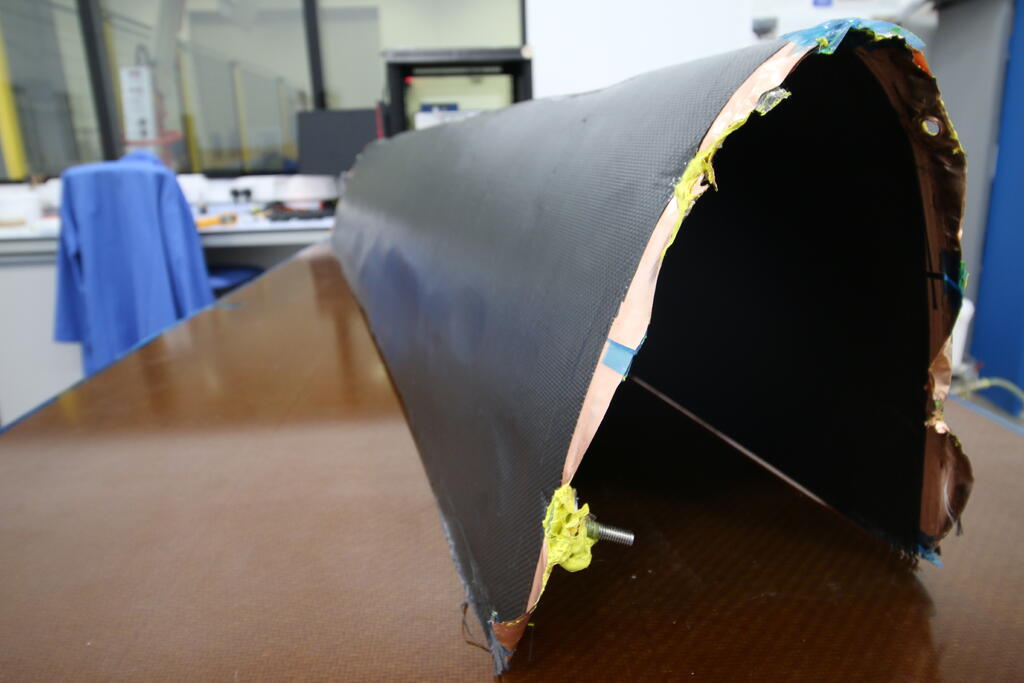
Composite researchers at the University of Sheffield Advanced Manufacturing Research Centre (AMRC) are taking part in a European project to develop what it calls ‘self-responsive’ aerospace composites.
The scientists plan to develop materials integrating carbon nanotubes for aerospace applications that have ‘self-cure, self-anti-icing and self-sensing’ properties.
Plans are for the new technology to help reduce greenhouse gas emissions and production costs in aviation.
The center is partnering with 16 industrial partners on the MASTRO project, which aims to develop intelligent bulk materials for transport as part of the EU’s Horizon 2020 initiative to promote science.
‘For the first year-and-a-half we’ve been working on developing the materials and so the next stage is developing the smart demonstrators,’ said Matthew Collinson, Research Engineer in the AMRC composite center. ‘Now we’ve reached a point where we can build a section of a composite leading-edge wing.’
According to Collinson, the materials self-cure by using an electric current. ‘Currently, [these composites] are manufactured in an autoclave but they can be slow and expensive to run,’ he said. ‘Running electrical current through the fibers of the composite to act as the heating element to cure the component can be cheaper, quicker and uses much less energy. It also complements our work on anti-icing.’
‘There are so many benefits, but the main ones are low energy output and low equipment costs,’ added Dr Betime Nuhiji, technical lead at the center. ‘There is also the close control of heating, because when you turn an oven off it is still hot, so you are still effectively heating the part; when you turn off the electrical system no more power is going through it.’
Collinson said that similar technology is used to investigate self-anti-icing: ‘Currently, aircraft remove surface ice by drawing hot air from the engine to melt the ice, but this takes power away from the engine and is less efficient, so we have been developing an electrical anti-icing system that doesn’t require separate heating elements in the component.
‘Linked to both these technologies is self-sensing, monitoring the electrical resistance of the part to detect damage. When you get barely visible impact damage (BVID), the resistance changes so you can monitor that and detect where the damage is. BVID is something the aerospace industry is very interested in because it is very difficult to detect through visual inspection, which they currently do, on composite structures.’
To enable these smart functionalities, resin development has also been necessary: ‘Within a composite, the fibers are extremely electrically conductive but the resin is electrically insulating. Part of the project to develop these bulk materials is to make the component more conductive by mixing carbon nanotubes into the resin, so that the whole part is conductive, not just the fibers.
‘Doing that should enhance every aspect of the MASTRO project. The self-curing and the anti-icing will perform better because the heat is distributed more evenly. And then we will also get increased response in damage detection because, again, the whole composite is conductive rather than just the fibers.’
Dr Nuhiji said that the project team is now focused on creating panels that replicate how they would need to be used in a real-world environment, on the leading-edge of an aeroplane wing.
‘At the start of the project we conducted lots of trials on smaller panels to optimise how to detect damage and cure effectively. Now we need to upscale as the final demonstrator we want to show is the leading-edge, which is two metres long,’ he said. ‘We have been delayed but we have now manufactured our first self-curing, self-anti-icing and self-sensing part and can start testing very soon.’




